If you purchase an independently reviewed item through our site, we earn an affiliate commission. Read our affiliate disclosure.
We have all consumed honeybee products in one way or another. However, most of us may even not be aware that one of our favourite products is actually derived from honeybees. Indeed, honey is not the only thing that bees produce. Other honeybee products are:
Beeswax
Beeswax is ideally made by young bees, precisely 2 to 3 weeks old. They prepare the beeswax after feeding the young brood on royal jelly, just before they venture outside the hive to forage. The beeswax is sourced from underneath the abdomen of the worker bees. It is used by the bees as building blocks of the hive. The wax is used in building comb cells for young bees. It is also used for sealing cracks in the hive and building storage honey cells. Furthermore, beeswax acts as a cushion against infection for the brood.
Human uses of beeswax are diverse. It is and remains to be the most useful bee product in the market. Its use dates back to early historic days when it was used for paying taxes. It was even considered a legal tender in Europe during its early historic years. Artisans also used beeswax for making models historically. It was also used by priests to embalm bodies and woodworkers used it for holding together wood pieces. Other uses of beeswax include: making waterproof walls in the ancient Roman Empire, making writing tablets, strengthening sewing threats, food preservatives, and in creation of moisture-proof casing. Many of these uses are still applicable today in addition to making the finest candles, making cosmetics, polishes, food applications, and pharmaceutical products with many applications.
Royal Jelly
Royal jelly is a white fluid that is paste-like and is secreted by the worker bee from its head glands. The jelly is used to feed the larvae in the colony. Royal jelly is composed of 67% water, crude protein 12.5%, simple sugars 11% and 5% fatty acids+ vitamin C + enzymes + minerals. The nurse bees produce this essential substance when 5 to 15 days old and is fed on the larvae in its first three days of existence. After that the larvae chosen as the queen is strictly fed on huge amounts of the royal jelly. Thereafter various molecular events take place, transforming the queen into a huge, fertile bee with a long life that will feed on royal jelly for the rest of its life.
The Royal jelly is usually harvested when the queen is 4 days old. It is collected from the queen cells where it is deposited in huge amounts. In fact, the queen literally swims on the jelly. The jelly is widely used since it has many benefits. First off, it stimulates neurological cell growth which helps in the treatment of Alzheimer’s and Parkinson’s diseases. It is also used for healing wounds, lowering cholesterol levels, fighting inflammation, and inhibiting the vascularization of tumours. It is regarded as a dietary supplement and is highly accepted as a stimulant and therapeutic agent. Click here to read about the health benefits and possible side effects of royal jelly.
Propolis
Propolis is another important honeybee product. The bees gather resins from flowers, trees, and other artificial sources which are then used to make propolis. Its composition normally varies depending on the season, the area in question, and the resin sources available. However, it is most cases compost of 1/5 resins and vegetable balsams, 1/3 wax, 1/10 essential oils, and 1/5 pollen. Its chemical composition will also vary depending on the vegetation. Propolis is used by bees for sealing cracks in the hive and also for blocking fungi and bacteria.
Propolis usually dries and becomes impenetrable and hard. It protects the bees from adverse climatic changes such as cold and hot temperatures. Other studies have shown that bees use the product to seal huge animals such as rats and other invaders when they die within the hive. This helps render the dead carcass harmless to the hive inhabitants.
Propolis has antiseptic, detoxifying, and antimicrobial properties. It is used for healing wounds resulting from ulcers, inflammation or even burns. It has even been given the name “Russian penicillin”. When used as an antiseptic salve or wash, propolis inhibits bacterial growth in cuts, burns and wounds. It is also an excellent remedy for sore throats. In terms of chemical composition, the product will vary depending on the sources used and no two products have the same medicinal properties. Click here to read about the health benefits and possible side effects of royal jelly.
Bee Pollen
Bee pollen is produced from the anthers of flowering plants. It is made up of sugars, proteins, lipids, and amino acids. The pollen is normally collected by bees when foraging from one flower to the other. In the process, they act as pollinating agents. On their return to the hive, the pollen is packed, mixed with nectar and honey then stored as granules. This forms what is referred to as bee bread. It is the main source of protein for the bees and helps in the production of royal jelly and bee wax.
There are various non-scientific records that have reported the benefits of bee pollen. These include endocrine disorders, chronic problems, male sterility, the common cold, ulcers, acne, and high blood pressure. Some of the proven medical benefits of pollen include its role in eliminating prostate problems and allergies. It treats swelling and cancer of the prostate area. It is also effective in treating high fever and sensitivity to pollen. Pollen is used as a food supplement. It is however impossible to get exact chemical components from different pollen sourced from different regions. Click here to read about the health benefits and possible side effects of royal jelly.
Bee Bread
Bee bread is a product made by bees and comprises pollen, nectar, beeswax, bits of honey, and digestive products. It is collected by honey bees and kept in brood cells. The product is mainly made for future uses when food sources are scarce.
Bee bread is used to feed the bee larvae and bees. It feeds all larvae except the larva that has been selected to be the future queen. Instead, future queens need to consume pure royal jelly. Bee bread is consumed by humans and is useful in countering anaemia, digestive tract disorder, hepatitis, cholesterol, stress, memory lapses, and insomnia. Bee bread is rich in vitamin K, flavonoids, and enzymes.
Bee bread is made and sealed with honey and then stored in brood cells for future use. Seasons of dearth prove to be the most challenging to both the beekeeper and honey bee colonies. The beekeeper might support the honey bees through supplement feeding at this time. However, honeybees have also adapted to seasonal changes and have developed ways of coping with hardier seasons.
The honey product reserves you find in the beehive are never meant for our consumption but rather for the honey bee colony. The bee bread, honey, and nectar reserves are kept by bees for later consumption. You can harvest these products but it is advisable that any harvesting is done sustainably. Irresponsible harvesting of honey bee products can impact the honey bees negatively. The colony collapse at the end of winter will occur as a result of several factors that include; pests and parasite infestation, lack of food, and poor hive conditions such as freezing and wet conditions.
You can find bee bread in honey speciality stores or bee farms. It is a useful product that can be ingested directly. Too much bee bread in hives can hinder movement between brood boxes and supers. This should be harvested for human consumption. Most health food companies sell bee bread alongside other products in the form of supplements.
Bee Venom
Bees are associated with aggressiveness and their sting. However, very few people have ever understood the reason why bees sting. Bees will never sting without an apparent reason. They sting when provoked or when they feel threatened. The same response can be observed in both domesticated and wild honey bees. Most honeybees will sting only when their life is at serious risk.
Most people experience some reaction when stung by bees. This is perfectly normal. However, some individuals can experience an allergic reaction that can be deadly in some instances. If this happens, they will need to seek medical attention. Doctors and other medical practitioners will use bee venom to counter the allergic reaction to bee venom. Some other illnesses and conditions can be remediated using bee venom. A disclaimer though; the medicinal uses of bee venom are not backed by scientific evidence. The bee venom is normally milked or extracted from honey bees using specially built machines that will never harm the bees.
There has been an increased use of bee venom in other industries as well, besides the medical field. It is a commonly used product in the cosmetic industry. Bee venom is used as a substitute for Botox and you can find it in creams and serums.
Zabrus
This is another honey bee product that has gained popularity in modern medicine. It is the strip cut off from the top of sealed honeycombs. This is not wax and is different in terms of composition. It is popularly used by natural therapists and herbal practitioners.
Zabrus helps to treat viral and bacterial diseases. It can be chewed and will help counter diseases of the upper respiratory tract. It also helps remedy conditions that affect the nasopharynx. Zabrus does not cause allergic reactions and will help accelerate saliva production thus improving gastric mobility and food digestion.
Zabrus can also help treat inflamed sinuses. You can chew it and will ease pain and clean the nose. You should however consult your doctor before using any natural remedy such as Zabrus. Most of these products are not backed by scientific studies.
Mead
This is a honey bee product that has been in use for centuries. It is also referred to as honey wine. It was the first alcoholic drink men brew even before the discovery of beer or wine. The product has gone through a lot of transformations and improvements over the years and what you find in stores is completely different from what used to be in use.
Mead is a special product that comes in various flavours: cherry, malt, blueberry, herbs, and spices. Mead is made by fermenting honey with other products as well. For instance, hops and grains. It can have an alcohol content that can range from 3.5 to 18%. It is stronger than beer and falls neither in the wine nor beer category. It is availed in various sub-styles or varieties and there is no limit to its flavours. It is an extremely versatile product making it possible for wine and beer makers to play around with unlimited flavours.
Mead is known for its health and vital properties. Ancient cultures held the product in high esteem and even referred to mead as “the drink of the gods”. The antioxidant and antimicrobial properties you find in honey are not lost when the mead is brewed. The fermentation process helps induce helpful microorganisms in the final product. Mead is gluten-free and still holds the benefits you get by consuming honey.
Mead used to be highly priced when compared to other products such as wine and beer. This was because honey costs more per pound when compared to raw products such as grapes or barley. Prices have however come down over the last few years since manufacturers have identified ways of lowering costs.
Mead is made by diluting honey with water before adding in some other products such as spices and fruits. The resulting product is fermented. Some mead makers can heat the water and honey mixture to kill unwanted bacteria before adding any flavours. Others do not apply heat since they believe it takes away some of the properties of honey. Yeast is required for fermentation. Nutrient blends are also added to the mixture.
Beehive Air
Believe it or not, humans have been doing wonderful things with honeybee products one would never imagine. Beehive air is ideally not a physical honeybee product, but the air honey bees generate through their buzzing action using their wings. This is mostly used by natural therapists, who they attach a hose and mask to the beehive cover. The patient will inhale the air generated by the bees in the beehive.
One may wonder how it feels to smell the air emanating from the hive. Well, if you have ever worked on a beehive during honey flow seasons, then you can understand how pleasant the smell is. Natural therapists will instruct the patient to sit for a while and inhale the air that comes out of the beehive. This kind of therapy has been reported to be helpful for people with asthma.
Anyone can also try out this therapy since the beehive air in itself is pleasant and therapeutic. Unfortunately, this is not a product you can harvest and package for sale. Its effectiveness is also not supported by scientific evidence.
Dead Bees
Dried and well-stored dead bees can serve many purposes. The maximum number of dead bees will occur during spring. These should not be disposed of but rather harvested, dried, and stored. It is important to ensure what is harvested is not smelling.
Dust and other unwanted material should be removed from dead bees using a sieve. You can then store the dried bees in a ventilated area to keep their properties. It is rich in heparin and other useful products. Some of the benefits of dead bees include helping remedy: myopia, varicose veins, sexual dysfunction, joint pain, obesity, and thrombophlebitis.
Dead bees are used medically in various forms: alcoholic extract, broth, liniment, and steam. The product is biologically compatible with all foods and will never damage the body. It has so many health benefits and is easy to use. It is highly recommended by many natural herbalists.
Wax Moths
The wax moth is a pest that co-exists with bee colonies. It is regarded as the only species of insect capable of feeding on honeybee waste products. It can also digest wax and can be found anywhere you find honey bees. However, they do not inhabit areas with harsh climates such as high mountains.
As much as they are a pest and can wipe out entire colonies, the wax moth can be valuable. They are used as an extract in food and cosmetics. It has powerful properties that help human tissues and organs. It has a rejuvenating effect and helps in restoration and regeneration. It also helps strengthen the heart muscle and blood vessels. It is used in modern medicine in countering tubercle bacillus. This is the agent that causes tuberculosis. The digestive enzyme of the wax moth helps eliminate viruses and other bacteria by breaking down these harmful organisms into simple components that can be eliminated. It helps weaken them by removing their protective cover that resembles honey bee wax.
Wax moth larva has been in use as a medicinal remedy for centuries by healers and beekeepers. It was used to help childless women, elderly people, and consumptive patients.
Conclusion
There are plenty of honeybee products to be found in a beehive. Beeswax, royal jelly, propolis, bee pollen and more are all by-products of the beekeeping process and these products are diverse in their uses and can be very beneficial to us humans.
References
- https://www.bharathoney.com/honey-bee-products/
- https://saveourbees.com.au/bee-products/
- http://new.bhu.ac.in/Content/Syllabus/Syllabus_300620200424054413.pdf
- https://www.britannica.com/topic/beekeeping/Bee-products
- https://www.fda.gov/animal-veterinary/animal-health-literacy/helping-agricultures-helpful-honey-bees
- https://www.fao.org/3/w0076e/w0076e00.htm
- https://www.sciencedirect.com/science/article/abs/pii/S0924224420304556
Do you harvest other honeybee products from your beehive apart from honey? Leave a comment below and let us know.
 BeeKeepClub Resources and Guides for Beekeepers
BeeKeepClub Resources and Guides for Beekeepers
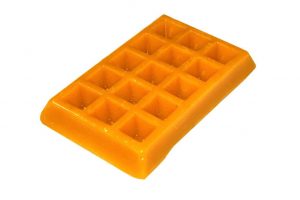
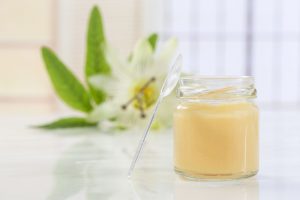
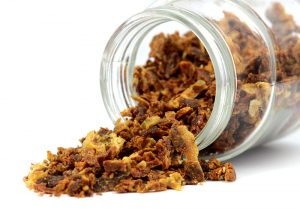
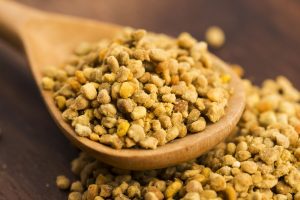
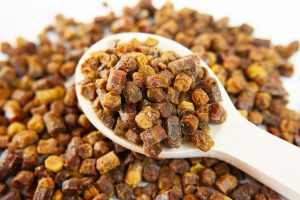
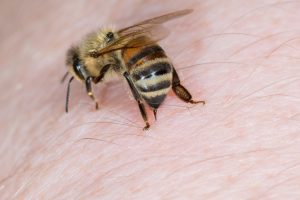

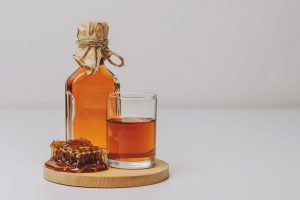
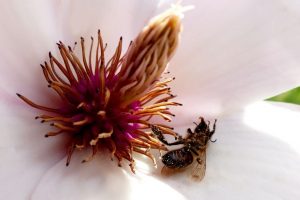

Tried to download the ebooks but it’s actually just links which take you back to the main website. A bit disappointing.
Yes, all the ebooks are hosted on the main site.
Hi Thank You for this information, as rightly said honey can be use in other form also.
There are different types of honey i have use like Honey Sarbath from Bharat Prakriti Foods.
This blog is really helpful.
[…] practices and a suitable beehive, you can enjoy a satisfying income with every harvest of beehive products. Beekeepers with a large number of beehives enjoy more profits from their beekeeping […]